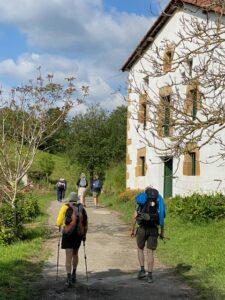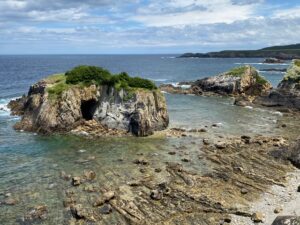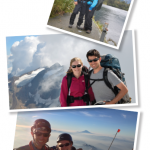The year before my hike, I was extremely busy with various ACR workforce issues; meetings; presentations, locally, regionally and nationally; juggling medical missions and more. However, I had blocked time in my calendar over one year in advance to hike the Camino de Santiago in Spain with a long-time U.S. Army buddy. I met Pat in 1988. We served together in internal medicine at the 98th General Hospital in Nuremberg, Germany, from 1988–90. Pat pursued a fellowship in pulmonary and critical care medicine, and had a successful career in Houston. Training for this journey, the actual experience and continual reflection after our hike enhanced my understanding of the inherent need for contemplative leisure.
Pat is an avid hiker. His exploits include hiking the Himalayas. In 2022, out of mere curiosity, I asked him about hiking Camino de Santiago, along the north coast of Spain. His response was “Hey dude, this is on my bucket list. Let’s do it together.”
I had never seriously hiked anywhere before, and I asked how much of the Camino we should hike.
“The entire route,” he replied, “500 miles over five weeks.” I humbly accepted his challenge. As a novice, I hoped I would be a quick learner. Hiking in the Pyrenees mountains, with a gain and loss of 3,000 feet a few times per day, for 35 consecutive days would be demanding.
There are three primary hiking routes to Santiago de Compostela in Galicia, Spain: The most popular route is the Camino Frances, starting in the French Pyrenees; the Camino Portugues, from Lisbon to Santiago; and the Camino del Norte, adjacent to the coast from Irun to Santiago. Only 5% of hikers walk the north route because it’s the most physically demanding. However, it is the most picturesque route, bordered by the Bay of Biscay on the right and the Pyrenees on the left when hiking toward Santiago. The north route originated from James the apostle’s route in A.D. 40 followed by numerous historic battles for centuries in the Basque, Cantabria, Asturias and Galicia regions of Spain. Like the Appalachian and the Pacific Crest trails, which provide solitude and wilderness, the Camino also provides international camaraderie, European history, and unique cultures. Ultimately, most hikers celebrate their treks after arrival in Santiago de Compostela.





